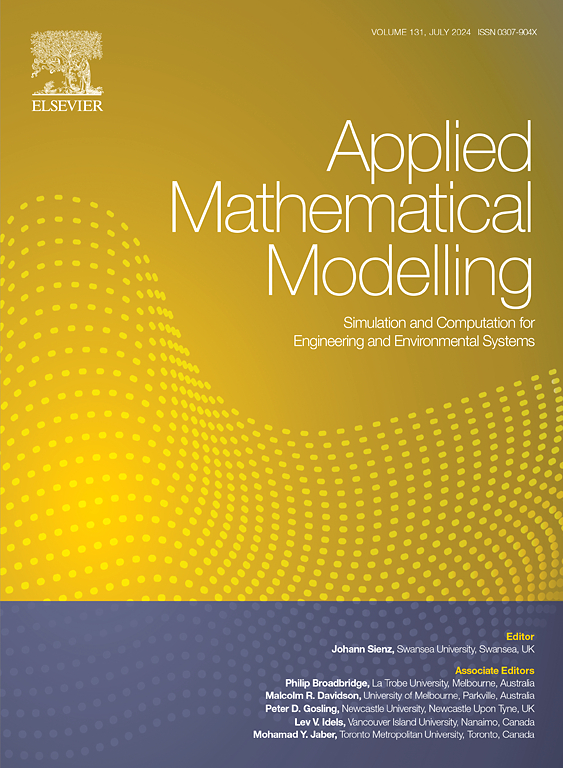Synchronization of bursting oscillations in coupled FitzHugh-Nagumo neurons
IF 4.4
2区 工程技术
Q1 ENGINEERING, MULTIDISCIPLINARY
引用次数: 0
Abstract
The research of bursting oscillations in neuronal models not only enriches the study of nonlinear dynamics, but also deepens the understanding of the working mechanism of the brain. A coupled FitzHugh-Nagumo (FHN) neuron model can be simulated by connecting two resistor-inductor-capacitor circuits via a resistor. Taking into account the external excitation as a slow variable, the FHN neuron model can be converted into a generalized autonomous system. Fast-slow analysis is used to investigate the phenomenon of bursting oscillations produced by two identical neurons and two non-identical neurons independently. By examining the superposition of the equilibrium curves with the transformed phase diagrams, the generation mechanisms of the six bursting oscillation behaviors are revealed. Meanwhile, the synchronization phenomenon between two neurons is verified in conjunction with the related synchronization theory. Furthermore, the cause for the antiphase synchronization of the system generating bursting oscillations is elaborated.
耦合FitzHugh-Nagumo神经元爆发振荡的同步性
神经元模型中爆发振荡的研究不仅丰富了非线性动力学的研究,而且加深了对大脑工作机制的认识。一个耦合的FitzHugh-Nagumo (FHN)神经元模型可以通过一个电阻器连接两个电阻-电感-电容电路来模拟。考虑外部激励为慢变量,可以将FHN神经元模型转化为广义自治系统。采用快慢分析方法研究了由两个相同神经元和两个不相同神经元独立产生的爆破振荡现象。通过观察平衡曲线与变换相图的叠加,揭示了六种爆破振荡行为的产生机理。同时,结合同步理论对两个神经元之间的同步现象进行了验证。进一步阐述了系统反相位同步产生爆破振荡的原因。
本文章由计算机程序翻译,如有差异,请以英文原文为准。
求助全文
约1分钟内获得全文
求助全文
来源期刊

Applied Mathematical Modelling
数学-工程:综合
CiteScore
9.80
自引率
8.00%
发文量
508
审稿时长
43 days
期刊介绍:
Applied Mathematical Modelling focuses on research related to the mathematical modelling of engineering and environmental processes, manufacturing, and industrial systems. A significant emerging area of research activity involves multiphysics processes, and contributions in this area are particularly encouraged.
This influential publication covers a wide spectrum of subjects including heat transfer, fluid mechanics, CFD, and transport phenomena; solid mechanics and mechanics of metals; electromagnets and MHD; reliability modelling and system optimization; finite volume, finite element, and boundary element procedures; modelling of inventory, industrial, manufacturing and logistics systems for viable decision making; civil engineering systems and structures; mineral and energy resources; relevant software engineering issues associated with CAD and CAE; and materials and metallurgical engineering.
Applied Mathematical Modelling is primarily interested in papers developing increased insights into real-world problems through novel mathematical modelling, novel applications or a combination of these. Papers employing existing numerical techniques must demonstrate sufficient novelty in the solution of practical problems. Papers on fuzzy logic in decision-making or purely financial mathematics are normally not considered. Research on fractional differential equations, bifurcation, and numerical methods needs to include practical examples. Population dynamics must solve realistic scenarios. Papers in the area of logistics and business modelling should demonstrate meaningful managerial insight. Submissions with no real-world application will not be considered.
 求助内容:
求助内容: 应助结果提醒方式:
应助结果提醒方式:


